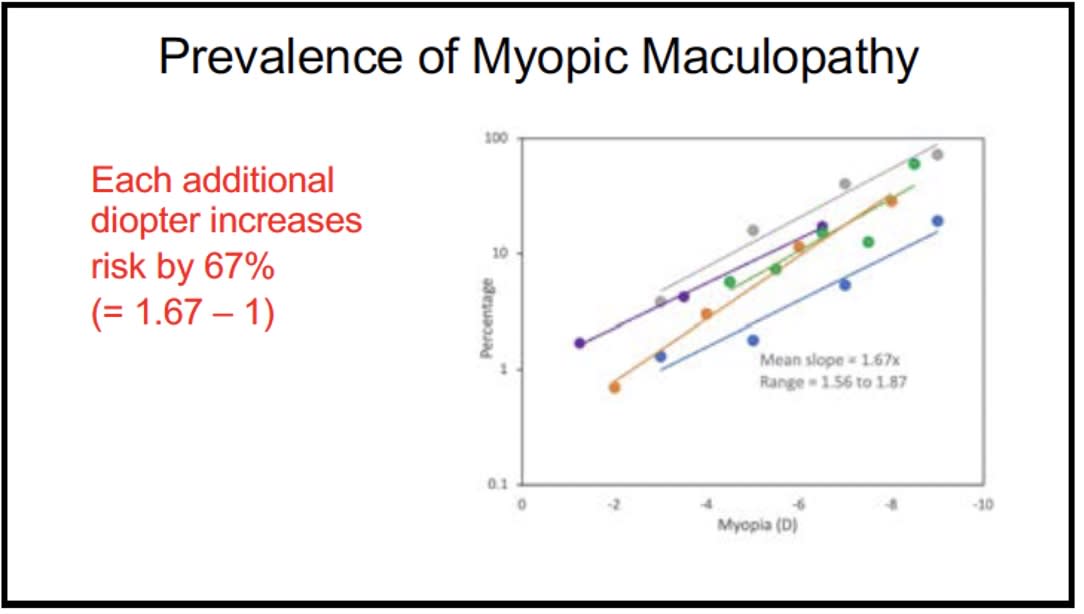During his presentation at Optometry’s Meeting 2025, “Myopia Control: Comparing the Risks and the Benefits,” Mark A. Bullimore, MCOptom, PhD, FAAO, stressed the importance of intervening early. Specifically, he cited long-term risk of visual impairment and increased risk of eye disease as the reasons to do so.
“Myopia is a disease that is responsible for a third of all uncorrectable visual impairment,” he stressed. “If optometrists can prevent just one diopter of myopia, visual impairment is reduced by 25%.”

Poor Vision
Dr. Bullimore noted that patients who are highly myopic have poorer uncorrected visual acuity (VA), poorer corrected VA, and report more challenges related to their vision. Furthermore, he said that each diopter of myopia increases visual impairment risk by 30%.
Predispositions to Other Conditions
Additionally, patients who are myopic are at an increased risk of developing cataract, glaucoma, myopic maculopathy, or myopic macular degeneration and retinal detachment, pointed out Dr. Bullimore. What’s more, he told attendees that each diopter of myopia elevates the risk of the prevalence of open-angle glaucoma and posterior subcapsular cataract by 20% and 21%, respectively, and increases the risk of a retinal detachment by 30%.
No Risk, No Reward
Dr. Bullimore also acknowledged that although the myopia-control options of spectacle lenses, atropine, multifocal soft contact lenses, and overnight orthokeratology are not without risks, their benefits far outweigh their risks. OM



